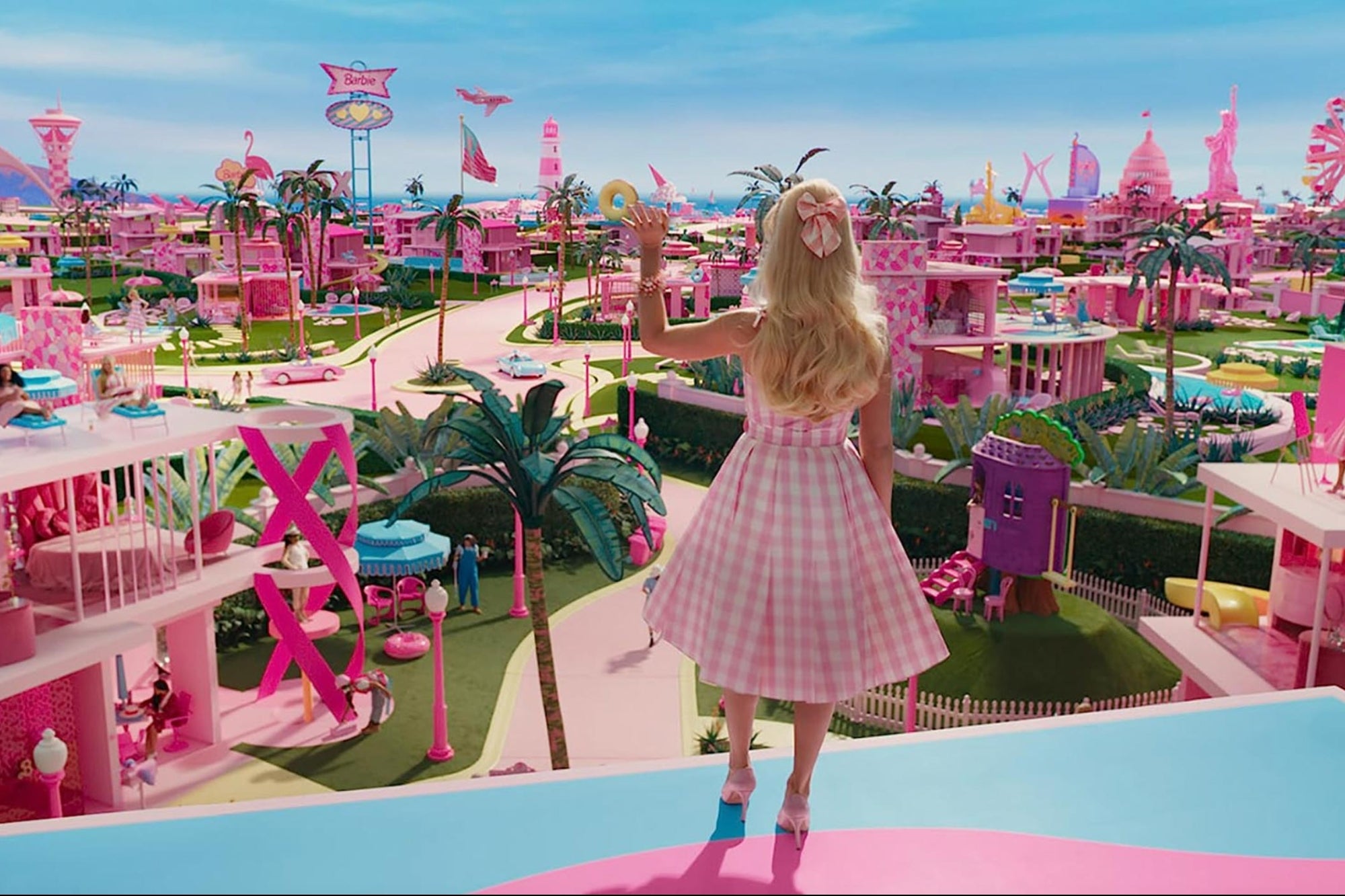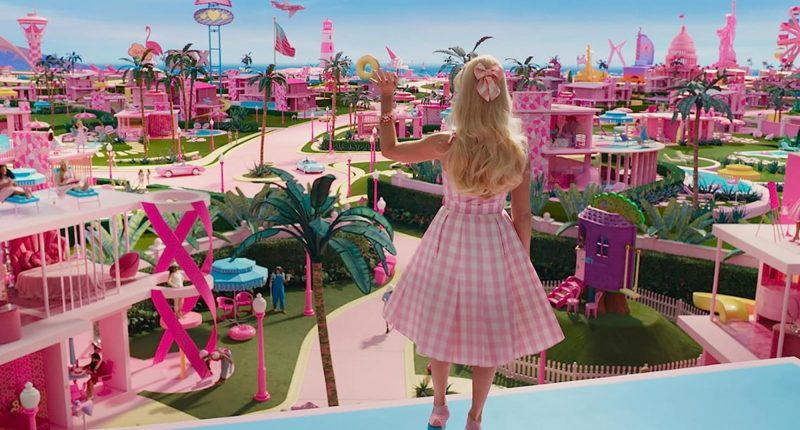
Opinions expressed by Entrepreneur contributors are their own.
Hi, Barbie!
The “Barbie” movie was magic in a bottle (or, more aptly, magic in a box with a cellophane front), but not for the reasons you think. Its box office didn’t break $1 billion just because of its great branding — it was a fantastic product, full of heart. Yes, it had a massive marketing budget. It had memes. It became the definitive summertime cinema experience of 2023. But now it raises the question: What does Mattel do next? And what lessons will they have learned from all this success?
Pink on the silver screen
Greta Gerwig and Margot Robbie were focused on making the most creative and thought-provoking movie they could within the confines and potential of “Barbie,” one of the most recognizable toy brands in the world. I know toys. I cut my teeth on toys, moving everything from dolls to hula hoops in the early days of Amazon.
Gerwig and Robbie explored Barbie’s breadth of humanity, from the magic of playing with toys to the corporate management of the brand. Because they made the right creative choices for the movie, defending all aspects of Barbie, it added up to something wonderful — something pink. So pink, in fact, painting the set created a world shortage of fluorescent pink paint. The movie is bright, tactile and creative, and the marketing reflected that.
Warner Bros. wouldn’t have put $150 million into the marketing budget if they didn’t know they had a great movie on their hands. They harnessed the power of other brands that were “Barbie” in their own right. There was the AirBnB Malibu Dreamhouse. Pink Barbiecore Crocs. The standees in theaters nationwide were giant toy boxes in which people took pictures. Flo and Jamie, the Barbie and Ken of the Progressive commercials were even at the premiere. Enough premium content was made to generate intrigue and excitement, but that doesn’t even touch the organic buzz around the “Barbie” movie.
The natural spontaneity of memes and the coincidence of release dates made Barbie and Christopher Nolan’s “Oppenheimer” the perfect pair. The memetic nature of seeing the smiling face of Margot Robbie’s Barbie next to Cillian Murphy’s J. Robert Oppenheimer, father of the atomic bomb, created a dichotomy for people to identify with one or the other. With the simple choice between pink and black, people were in on the joke and the conversation around these films. It also prompted many people to double feature “Barbie” and “Oppenheimer” — Barbenheimer. There is no way this reaction to Barbie could have been manufactured; it was a magical, rare response to a refreshed brand.
Related: What the ‘Barbie’ Movie Can Teach Businesses About Effective Multicultural Marketing
Box office brands
Michael Bay’s “Transformers” set off the toy movie renaissance in 2007. Hasbro had a hit on its hand, but the film is a technical marvel with impressive explosions and sound design. It’s marketed to the 18 to 34 male demographic who grew up with Transformer nostalgia and an urge to watch Megan Fox working on a Camaro. The darker, hardened version of past toys and brands is on its way out. Hasbro tried with the action-packed “G.I. Joe” movies and “Battleship,” but each one focused more on the action than the brand’s heart.
The king of maintaining the heart of their brand is LEGO. The movies, the games and the toys all support the soul of the LEGO brand, as well as the brands they partner with. “LEGO” comes from “Leg Godt,” meaning “Play Well” in Danish. Everything within the brand inspires fun play. “The LEGO Movie.” “The LEGO Batman Movie.” The LEGO Star Wars specials. LEGO’s success hinges on their respect for play. Hasbro and all other companies need to learn that their brands’ hearts must be nourished, not made louder and more explosive.
“Barbie” was pure heart and inviting to all. If you weren’t there for Barbie, you were there for Ken. Theaters were devastated by COVID-19, but Barbie piqued theater-going interest again, offering something on the big screen people have never seen before. A survey found that “Barbie” brought 9 million people to the theater for the first time since the pandemic had started. People have seen giant robots fighting on the big screen. But they hadn’t seen a doll filled with existential dread before.
Related: ‘Barbie’ Is Driving a Huge Surge in Vintage Car Buying Says Hagerty CEO
Will they ever learn?
So, how does Mattel keep people going to the movies? Mattel’s going to try mining all of the brands at their disposal. They already have at least 14 active projects in development, including Polly Pocket, Hot Wheels and Barney.
Will the Mattel cinematic universe be as manicured and intertwined as Marvel is for Disney? No. Of course not. But, if they do want to see success, they need to make sure the core heart of each brand is maintained on screen, just like Gerwig was able to accomplish with “Barbie.”
Does that seem like the case at the moment? We don’t know. Lena Dunham is attached to write and direct “Polly Pocket,” which must differentiate itself from “Barbie.” Daniel Kuluuya’s “Barney” (yes, the purple dinosaur from the 90s) will have an A24-like surrealistic tone aimed at adults. Hot Wheels will be “emotional and grounded and gritty,” according to J.J. Abrams. These creative minds appear to be exploring each brand from novel approaches, though. Whether or not Mattel lets them fully explore will determine their success.
You have to care about your brands. You can’t just get excited about the money you can stand to make — and make safely, calculated choices to maximize that number. You must trust your creatives to love your brand, like your fans and customers. A story from a recent New Yorker article sums it up nicely:
At the start of the “Barbie” process, Gerwig decided to write the screenplay with her partner, the writer-director Noah Baumbach. Mattel and Warner Bros. insisted on seeing a preview of the script’s contents. The couple balked—they needed the freedom to experiment. Jeremy Barber, an agent at U.T.A. who represents Gerwig and Baumbach, is close with Brenner, so he could be blunt. “Are you crazy?” he told her. “You should’ve come into this office and thanked me when Greta and Noah showed up to write a fucking Barbie movie!” In the end, Gerwig presented executives with a poem in the style of the Apostles’ Creed. They agreed to take their chances—and, after the script came in, the budget was set at about a hundred million dollars.
Would “Barbie” have been as successful if non-creatives were more involved with the creative decision-making? Well, would any Mattel or Warner Bros. executives have been able to write an Apostle’s Creed poem about Barbie? Probably not. Instead, with Gerwig’s and Baumbach’s experimentation, the world was given a heartfelt exploration of the Barbie brand. One that brought families and friends to the theater together in an experience they were not expecting. If Mattel wants another “Barbie,” they should let their creatives play.
This article is from Entrepreneur.com







